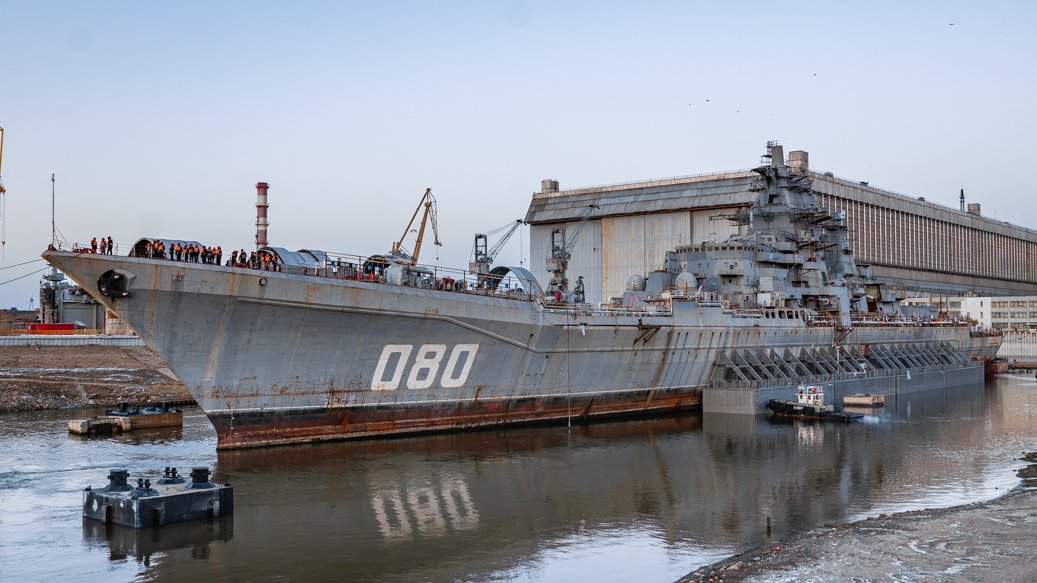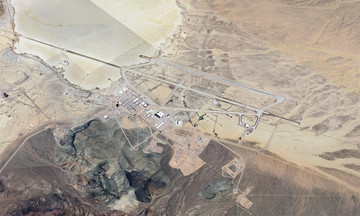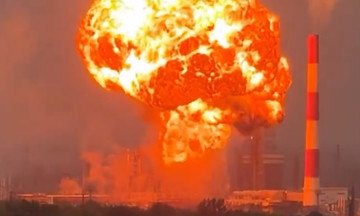Images posted on Russian social media on 19/8 showed the nuclear-powered battlecruiser Admiral Nakhimov being towed from the Sevmash shipyard in the port city of Severodvinsk, northwest Russia.
TASS news agency, citing a source in the Russian defense industry, reported that the warship had put to sea for trials after completing an overhaul and modernization at Sevmash. The first stage of testing will take place in the White Sea, with the remainder scheduled to be conducted in the Barents Sea and lasting several months.
Russian media reported in February that both nuclear reactors on Admiral Nakhimov had been activated and that the warship would begin sea trials in the summer of this year.
Admiral Nakhimov is one of 4 nuclear-powered battlecruisers of Project 1144 "Orlan," also known as the Kirov class, commissioned by the Soviet Union on 30/12/1988. Kirov-class warships possess a weapons system as powerful as a fleet of warships, earning them the nickname "floating super fortresses" during the Soviet era.
The battlecruiser Admiral Nakhimov has been in port since 1999, with the overhaul and modernization process beginning in 2013 by the Sevmash shipyard.
"Efforts to return Admiral Nakhimov to service have been repeatedly interrupted, partly due to the Russia-Ukraine conflict, but it's also important to remember that this was never an easy task," noted Thomas Newdick, editor of the US military website War Zone.
While its appearance hasn't changed much since the Soviet era, Admiral Nakhimov will be equipped with Russia's most modern electronic systems, communications, and weapons. The ship's nuclear reactors remain the same, but the maintenance and control equipment will be upgraded, ensuring stable and safe operation for decades.
The original armament of 20 P-700 Granit supersonic anti-ship missiles will be replaced by Kalibr cruise missiles and P-800 Oniks supersonic anti-ship missiles, transforming Admiral Nakhimov into a versatile combat platform capable of anti-ship, anti-submarine, and ground-attack missions from a range of 2,500 km.
The warship can also carry Zircon hypersonic missiles, as they use the same vertical launch tubes as the Kalibr and Oniks systems.
 |
The battlecruiser Admiral Nakhimov at the Sevmash plant in 2014. Photo: Oleg Kuleshov |
The battlecruiser Admiral Nakhimov at the Sevmash plant in 2014. Photo: Oleg Kuleshov
After the upgrade, the ship can carry up to 176 vertical launch systems, including 80 tubes for anti-ship and land-attack missiles, along with 96 air defense missiles from the naval version of the S-400 system. Close-in defense will be handled by 8 Pantsir-M systems with up to 32 missiles ready for combat.
"Admiral Nakhimov will be equipped with more launch tubes than any surface warship or submarine currently in operation worldwide," Newdick said. By comparison, China's Type-055 heavy destroyer has 112 vertical launch tubes, while the US Ticonderoga-class cruiser has 122.
The ship is fitted with new radar systems, and the Soviet-era twin-barreled 130mm AK-130 naval gun has been replaced by the more modern AK-192M.
Pham Giang (According to TASS, War Zone)












